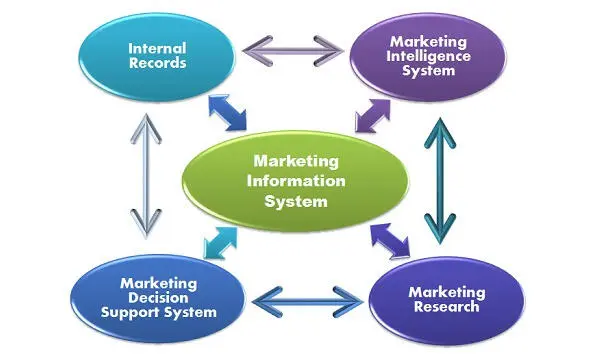Valery Bondarenko - Marketing and Pricing
- Название:Marketing and Pricing
- Автор:
- Жанр:
- Издательство:Литагент Ридеро
- Год:неизвестен
- ISBN:9785448564307
- Рейтинг:
- Избранное:Добавить в избранное
-
Отзывы:
-
Ваша оценка:
Valery Bondarenko - Marketing and Pricing краткое содержание
Marketing and Pricing - читать онлайн бесплатно ознакомительный отрывок
Интервал:
Закладка:
Marketing under its widest sense is a social and managerial process by which individuals and groups of people get what they need by creating products and exchanging them. When a person is unable to meet any need, he substitutes them or reduce the level of his requests.
EVOLUTION OF MARKETING
Phase Period Characteristics
I. beginning the twentieth century – 40th
Marketing had a sales character. The motto: «Everything produced must be sold». Sales methods of marketing and advertising were applied
II. 50 years – first half 70s
Marketing has been focused on the study of the market and customer demands.
The principle is: «It is advantageous to produce the products that will be in demand than to produce something that struggles to sell.»
III. second half 70’s – till present
Integrated market system covers the entire cycle of development, production and sale of goods, including market research, implementation of merchandise, pricing, communication and policy, strategic marketing governance and other marketing techniques
Thus, the requirements are translated into specific desires, which in view of monetary opportunities are transformed into market demand on the specific products. It appears the exchange between producers and consumers made out in the form of a particular transaction. It follows that the direct marketing economy to meet the constantly changing needs of the many millions of consumers.
In other words, the marketing is a philosophy of management, direction of its implementation, when the resolution of consumer problems leads to the success of the organization and brings benefit to the society.
At the level of individual economic entities marketing is defined as a complete system for planning the variety and quantity of produced products, pricing, distribution of products between the chosen markets and to promote their sales in order to achieve the diversity of benefits, led to the satisfaction of the interests of both producers and consumers. This definition has a sufficiently broad sense, as it covers the activities of non-profit organizations. Thus, marketing is the activity of the organization for the benefit of its customers.
In a more narrow sense (entrepreneurial) the marketing can be classified as a management system of production and sales management organization aimed at obtaining an acceptable value profit through accounting and active influence on market conditions.
From the above it follows that a variety of marketing applications causes a variety of its definitions.
It seems that as a fairly general definition of marketing can be offered. Marketing is a form of human activity to meet the demand for the material and non-material, social, value through mutually beneficial exchange.
Thus, marketing is also a system of thought and action system.
2. Basic concepts and scope of marketing
The concept of needsis at the core of theories of motivation (Freud, Maslow, etc.), determining the behavior of consumers in the market. The main task of marketing is to find a need and meet it.
Desire is the need to take concrete shape in accordance with the level of culture and personality of the individual. Sometimes it is called concretized need. For example, the total demand for food is transformed into a more private demand in the fruit, which, in turn, concretized results in the need, the desire to buy apples.
Demand is a desire, a specific need, backed by purchasing power. For given resource capabilities people satisfy their needs and desires through the purchase of goods that bring them the greatest benefit and satisfaction.
Product is all that can be offered on the market for the acquisition, use or consumption in order to meet specific needs.
Product is all that can satisfy any needs (physical goods, services, people, organizations, activities, ideas). In the literature on marketing the English term «product» is often translated as «goods». It is understood that the product manufactured by the manufacturer, with translational division by becoming a commodity market.
Exchange is the act of obtaining a desired product from someone by offering him something in return. Exchange is just one of the many ways means of which people get the desired product. Another way is hunting, gardening. This includes theft and begging.
The deal is trading between the two sides, including at least two subjects of interest and agreement on the terms, timing and months, those of its implementation. There are two types of transactions: cash transaction when goods are exchanged for money and barter transaction. The deal involves the performance of the following conditions: the presence of at least two products representing the interest for the mutual exchange, the agreed conditions, time and place of its commission.
The market in the marketing sense is a collection of existing or potential sellers and buyers of any products; it’s a place where deals are made. It is on the market the manufactured product and labor on it expended prove their social importance, acquire recognition among consumers. In modern society, the market does not necessarily have a physical location. To demonstrate the product, its advertising and getting the orders modern means of communication, without physical contact with customers are widely used. (In marketing, the market is the set of consumers of a particular product, they say, the market of metal, grain, etc. On the basis of this principle market segmentation is often carried).
3. The principles of marketing and its functions
There are the following marketing principles:
1. Careful consideration in deciding the needs, conditions and dynamics of demand and market conditions.
Adherence to this principle requires a good knowledge of the market situation and on the existing estimates of expected demand, activities of competitors in the market, the market behavior of consumers and of the ratio of the products of this company and its competitors.
2. Creating the conditions for maximum device production to market demand, the structure of demand based not on short-term gain and long-term perspective.
The modern concept of marketing is that all activities of the company (scientific, technical, manufacturing, marketing, etc.) were based on knowledge of consumer demand and changes in perspective.
3. To inform potential customers about the products and the impact on the organization of consumers using all available means, first of all advertising, in order to induce them to purchase exactly the product.
The marketing function
Formation of Trade Policy
– The development of the concept of commodity
– Formation of assortment;
– Taking into account the life cycle of the goods;
– Competitiveness;
– Creation of product attributes;
– Development of new products, etc.
Implementation of the marketing policy
– The definition of the concept of marketing;
– Select the channel distribution;
– Formation of distribution;
– Control of product distribution processes, etc
The organization of communication policy
– The organization of advertising;
– Public Relations;
– Personal selling;
– Sales promotion, etc.
Strategic management of branding
– Planning of marketing activities;
– The organization of the service brand-Thing;
– Control of execution, etc.
4. The structure of marketing complex
According to Kotler marketing complex is a collection of allowing controll marketing variables, the set of which the company uses in an effort to induce the desired reaction on the part of the title of the market.
The components of the marketing complex are:
• Trade policy.
Product is a set of «goods and services», which the company offers to the target market. Thus, a new painkiller could be a «commodity» in the form of a 50 white tablets in a white bottle with a cap that cannot close the children of, a three year shelf life, branded name «Aveline» and a money back guarantee in case of dissatisfaction with the buyer.
• Communication policy (sales promotion).
Methods of incentives are all sorts of activities of the company in order to spread information about the merits of the goods and to convince consumers to bathe in it. The company pays advertising, hires salespeople pushes the product with special events, organize its propaganda.
• Sales Policy.
Methods of distribution are all sorts of activities, through which product becomes available to target consumers. Thus, the firm chooses wholesalers and retailers, to convince them to pay for the goods more attention and care for the good of his computation, it looks the over-passes and provides efficient transport and storage.
• Pricing policy.
Price is amount of money that consumers have to pay for the obtaining of goods. The company offers retail and wholesale prices, favorable prices and discounts, sales on credit. The price should correspond the perceived value of the offer, otherwise buyers will acquires competitors’ products.
This structuring of the (complex) marketing fits into the concept of «4P», according to which in the marketing complex includes 4 elements, the name of the English language which begin with the letter «P»: product, promotion, place, price.
THEME 2. MARKETING RESEARCH
1. Marketing information system
In a well-functioning organizations marketing information is collected, analyzed and distributed as part of a marketing information system (MIS), which is part of the management information system of organization.
MIS concept originated in the United States, where it was put into implementation in the early ’70s, a few years after the development of the concept of an automated control system (ACS) in the case of individual-governmental organizations.
MIS is a collection (single set) of personnel, equipment, procedures, and methods for collecting, processing, analysis and distribution of the set time reliable information necessary for the preparation and making marketing decisions. It is sometimes said that the MIS is a way of thinking through solutions to find the necessary managers frames marketing information. It is recognized that the leaders and specialists of marketing are in need of specific information and the methods of its receipt. Thus, the MIS – is a conceptual system that helps to solve the problem of how marketing and objectives strategic planning.
The scheme of a marketing information system is as follows :

Marketing Information System
According to Philip Kotler, the four components that comprise the MIS are Internal Reports (Records) System, Marketing Research System, Marketing Intelligence System, and Marketing Decision Support System.
1.Internal Records: It records various data from different department of a company, which is regarded as a major source of information.
2.Marketing Intelligence System: It is a main source used by managers for gaining daily information of the external environment, hence assists the managers to react to the changing rapidly.
3.Marketing Research System: It is used to collect primary and secondary data, and displays the results in forms of reports.
4.Marketing Decision Support System: Compared to the supply of the data by the three previous systems, it focuses more on processing the data.
Читать дальшеИнтервал:
Закладка:










